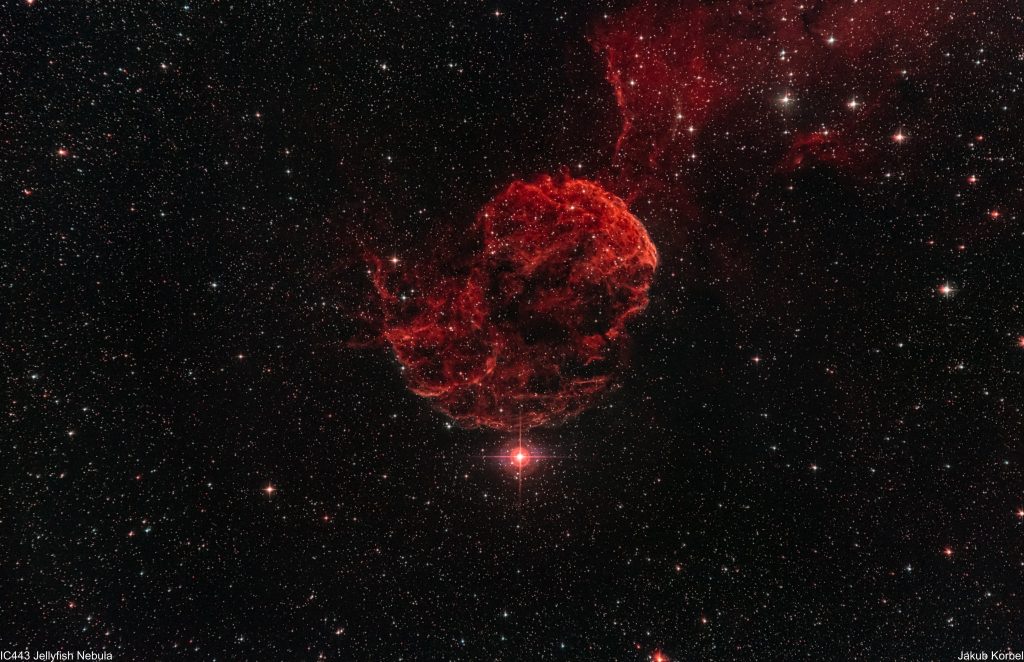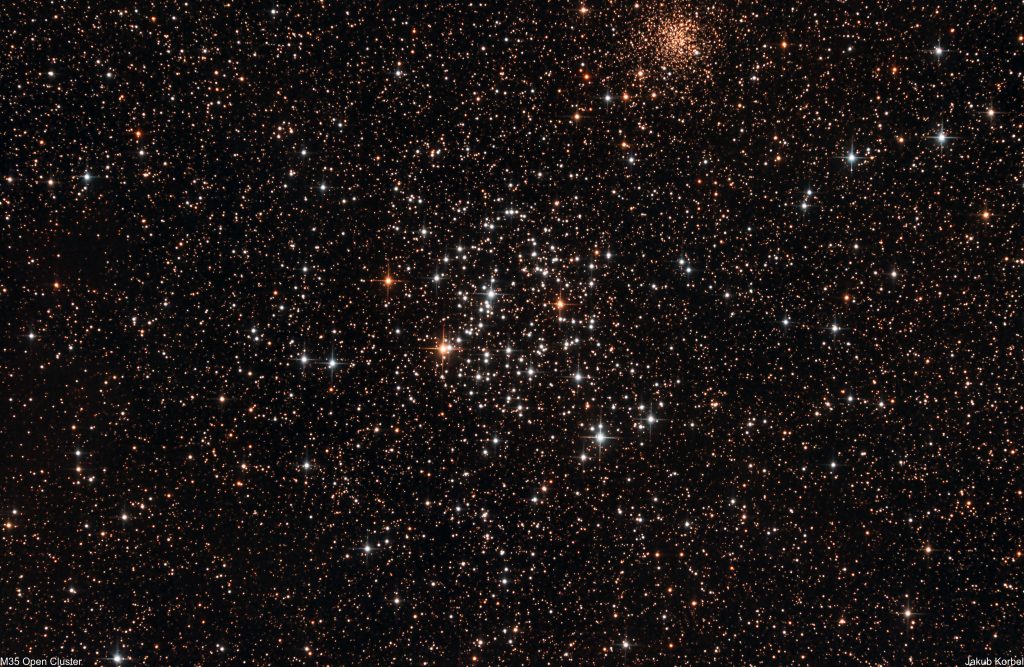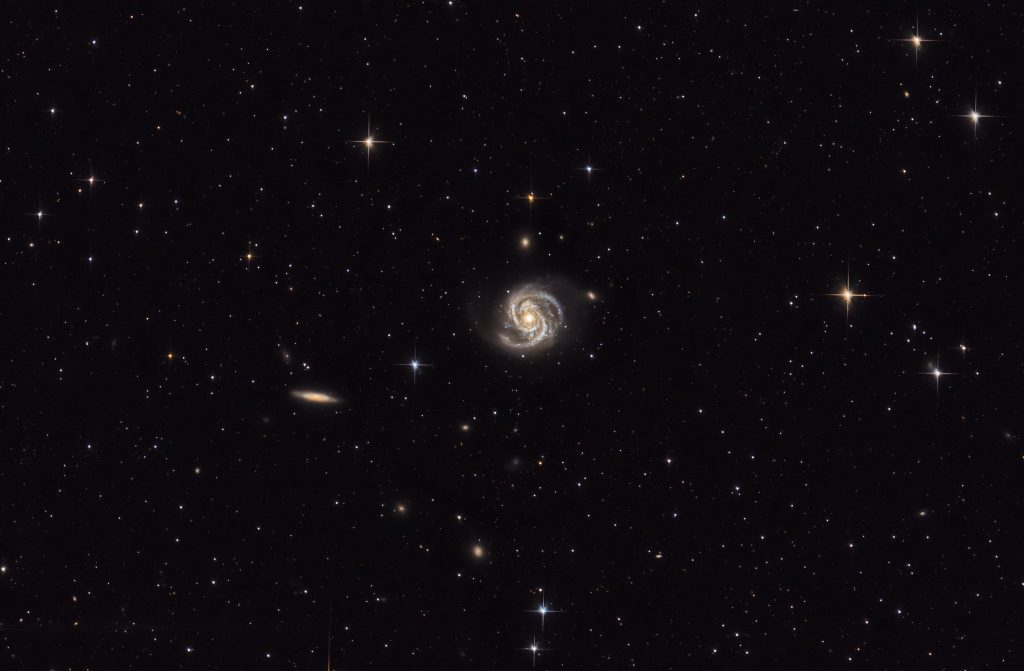Jellyfish Nebula is a supernova remnant in the constellation Gemini. A very long time ago a supermassive star exploded and emitted a lot of material into space. It is not clear when exactly it happened, but the latest research dates the explosion between a few thousand years and 30’000 years. The shape definitely resembles a jellyfish, having the head at the top and tentacles at the bottom and overall it looks like it floats in the space. It’s interesting how many nebulae have names related to an animal. For example the Seagull Nebula, the Elephant Trunk Nebula, the Eagle Nebula, the Lobster Nebula, the Horsehead Nebula, etc.

| Telescope | Newton 254/1000 mm |
| Aperture | 254 mm |
| Focal length | 750 mm |
| Mount | Gemini G53f |
| Autoguiding | ZWO 174MM, TS 60/240 mm |
| Camera | ZWO 071 Pro @-10°C |
| Corrector | Nexus coma corrector |
| Filters | Optolong l-eXtreme |
| Exposure | 48x300s, Gain 95, bin 1x1, |
| Date | 2022-02-06 |


